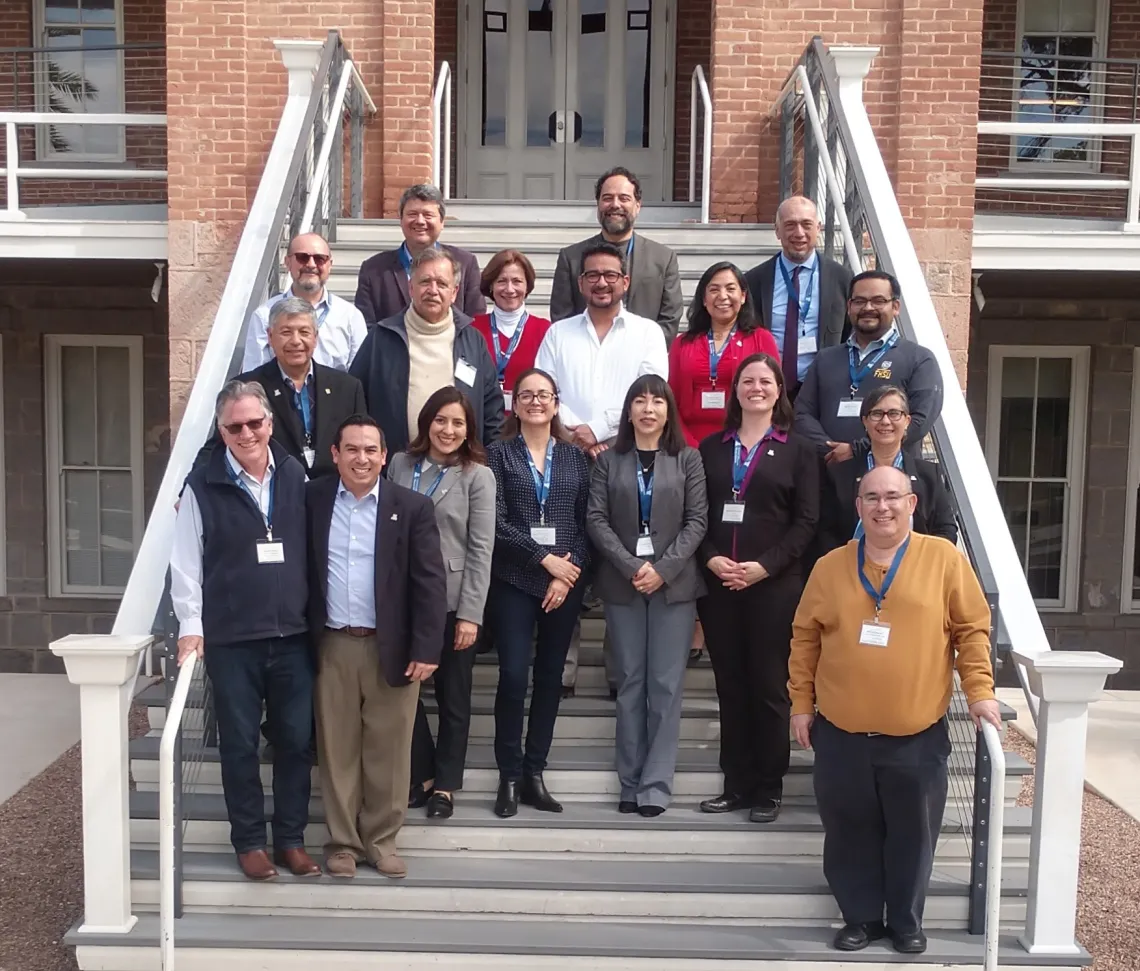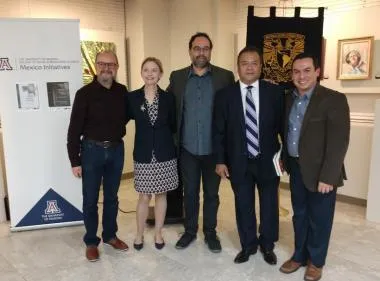Exploring The Shared Cultural Heritage Between The U.S. And Mexico

On the Edge Research Network (Symposium Participants) at the UA Old Mail.
From Feb. 26 – March 1, 2019, the UA hosted the binational research symposium “Shared Cultural Heritage: Memory Spaces, Experiences, and Boundaries.”
The symposium was organized by the UA faculty research group whose project "On the Edge Project: Expressions of Shared Cultural Heritages" was funded by the UA Confluencenter for Creative Inquiry through the Innovation Farm Grant 2017-19.
“The researchers explored a variety of approaches to the social, historical, and cultural ties that bind groups across ethnic, class, national, gender, and disciplinary lines, with a specific focus on the U.S. and Mexico,” said Luis Coronado Guel, director of SBS Mexico Initiatives, which co-sponsored the event.
As a step toward creating a robust and interdisciplinary research network, the binational symposium brought together top scholars from cross-border institutions, including three Mexican institutions: El Colegio de San Luis (COLSAN); CISAN - UNAM (Center for Research on North America); and UAS (Autonomous University of Sinaloa).
Participating UA faculty came from a variety of disciplines and departments, including history, English, architecture, anthropology, geography and development. Latin American studies, Southwest Center, Arizona State Museum, and College of Fine Arts. Jane Zavisca, associate dean of research and graduate students in SBS, and Elena Centeno, the new director of CEM-UNAM, delivered a welcome message to the participants during the inauguration.

The group explored questions such as: How is cultural heritage defined in different contexts between adjacent communities? In what kind of spaces and places does cultural heritage cohere or collapse? Are such boundaries visible or invisible, fictitious or real, symbolic or physical, fixed or malleable, natural or unnatural? How can different expressions of shared cultural heritage be mobilized to mitigate perceived divisions within and among communities?
Topics included transnational visions of patrimony, music networks, cinema, monuments, walls, popular culture, sustainable living, property rights, and architectural heritage.
CISAN'S delegates are members of the UA-UNAM Binational Consortium on Migration, Human Rights, and Human Security. COLSAN's delegates are part of a faculty research group that will work to develop projects aligned with the recently awarded academic chair "Primo Feliciano Velazquez" for UA English Professor Jennifer Jenkins.
The symposium was co-sponsored by the UA Confluencenter for Creative Inquiry, SBS Mexico Initiatives, Bear Canyon Institute for Southwest Humanities, CEM-UNAAM Tucson, Colegio de San Luis, CISAN-UNAM (Center of Research on North America), University of Sinaloa, and the Permanent Seminar "Actores y Dimensiones Emergentes de la Seguridad Humana" sited at CISAN-UNAM.

